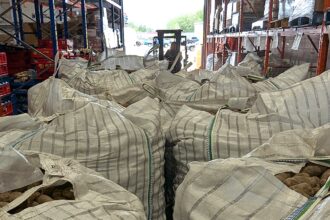The grocery cart tells a painful story for millions of Canadians. As food prices continue their relentless climb, an alarming trend is emerging in household finances: record-high credit card debt that threatens long-term financial stability for families across the nation.
“I’m constantly choosing between necessities,” says Marlene Diaz, a Toronto mother of two who has watched her grocery bill increase by nearly 40% over the past two years. “Last month, I put $630 of groceries on my credit card knowing I couldn’t pay it off. What choice do I have when my kids need to eat?”
Recent data from Statistics Canada reveals food inflation has outpaced general inflation by 2.7 percentage points this quarter, with staples like fresh vegetables, dairy products, and bread seeing the steepest increases. This sustained price pressure is forcing more Canadians to rely on high-interest credit to bridge the gap between income and essential expenses.
The Bank of Canada reports that national credit card debt has surged to a staggering $107.4 billion in the second quarter of 2024, representing an 11.2% increase year-over-year – the fastest growth rate in over a decade.
Financial analyst Jordan McKenzie of the Canadian Economic Policy Institute explains the troubling cycle: “When households use credit cards for essentials like food, they’re entering dangerous territory. Unlike discretionary spending that can be adjusted, people can’t simply stop eating. This creates persistent debt that becomes increasingly difficult to escape.”
The problem extends beyond urban centers. In rural communities, where food transportation costs create additional price pressure, the situation is often more dire. A survey conducted by the Rural Economic Development Association found that 42% of rural households report using credit cards to purchase groceries at least twice monthly, compared to 28% in urban areas.
Major Canadian banks have raised concerns about the sustainability of this trend. TD Bank’s quarterly economic assessment warns that persistent food inflation could trigger a wave of credit delinquencies by early 2025 if current patterns continue.
The federal government has faced mounting pressure to address food affordability. The Ministry of Finance recently announced consultations on potential grocery price regulations and expanded tax credits for lower-income households, though critics argue these measures may come too late for families already trapped in credit card debt.
“The government needs to recognize this isn’t just about food prices – it’s a financial crisis brewing beneath the surface,” says consumer advocate Samantha Lui. “When people are charging chicken and milk on cards with 20% interest rates, we’ve moved beyond an inflation problem to a potential household debt emergency.”
Financial counselors recommend emergency measures for those caught in the food-debt cycle, including negotiating with creditors, exploring lower-interest consolidation options, and investigating community food assistance programs that can reduce grocery expenses.
As Canada’s economic landscape continues evolving, the intersection of food prices and consumer debt represents a critical vulnerability. The question remaining for policymakers and consumers alike: How long can Canadian households sustain essential needs on borrowed money before the entire system faces a breaking point?

























